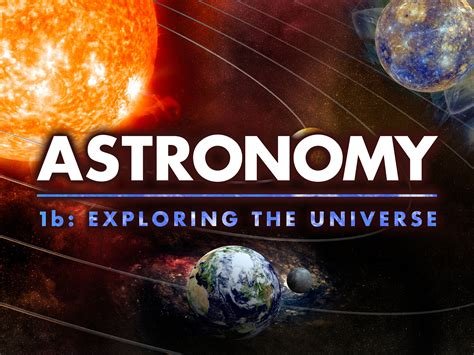The Fascinating World of Astronomy: Exploring the Universe and Beyond
The vast expanse of our universe has always intrigued and captivated the human mind. From the ancient civilizations to the modern era, the study of stars, planets, and celestial bodies has played a crucial role in shaping our understanding of the cosmos. In this blog post, we will delve into the fascinating world of astronomy and explore the universe and beyond.
We will start by delving into the fundamental question – what is astronomy? Then, we will take a trip down the annals of time to explore the history and evolution of astronomy, and how it has evolved into the intricate science it is today. We will also uncover the tools and techniques used by astronomers to observe and study the cosmos, as well as understand the composition of celestial bodies.
Furthermore, we will unravel the mysteries of black holes, explore the birth and death of stars, and discuss the ongoing search for extraterrestrial life. We will also touch upon the role of astronomy in understanding the universe and delve into various astronomical phenomena, such as eclipses and meteor showers. Lastly, we will explore how astronomy continues to inspire scientific advancements and technological innovations. So, sit back, and join us on this enlightening journey through the wonders of the cosmos.
What is astronomy?
Astronomy is the scientific study of celestial objects such as stars, planets, comets, and galaxies, as well as phenomena that originate outside the Earth’s atmosphere. It is a branch of natural science that seeks to understand the universe and its components.
Through the use of telescopes, astronomers observe and analyze celestial objects in order to better comprehend their composition, behavior, and interactions. They also use various techniques such as spectroscopy, astrometry, and photometry to collect data and draw conclusions about the nature of the universe.
One of the primary goals of astronomy is to uncover the mysteries of the cosmos, including the origins of celestial bodies, the lifecycle of stars, and the existence of phenomena such as black holes and supernovae. By studying these phenomena, astronomers contribute to our understanding of the fundamental principles that govern the universe.
Overall, astronomy plays a crucial role in expanding humanity’s knowledge of the cosmos and inspiring new scientific advancements. It enables us to explore the vastness of space and offers insights into the nature of our existence.
The history and evolution of astronomy
Astronomy has a rich history that stretches back thousands of years. Ancient civilizations such as the Babylonians, Egyptians, and Greeks were early pioneers in the study of the stars and celestial bodies. They relied on observational techniques and early forms of telescopes to track the movements of planets and stars, and to develop early theories about the nature of the universe.
Over time, the field of astronomy has evolved dramatically, with advancements in technology and the development of more sophisticated tools such as the telescope and the photographic plate. These advancements allowed astronomers to make new discoveries about the nature of celestial bodies, and to refine their understanding of physics and cosmology.
Today, astronomers continue to build on this rich history, using cutting-edge technology such as space telescopes and radio telescopes to push the boundaries of our understanding of the universe. The history of astronomy is a testament to the human spirit of exploration and curiosity, as well as our ongoing quest to unlock the mysteries of the cosmos.
As we look to the future, it’s clear that the history and evolution of astronomy will continue to inspire and inform the next generation of scientists and researchers, shaping our understanding of the cosmos for years to come.
The tools and techniques of astronomers
When it comes to astronomy, scientists rely on a wide range of tools and techniques to observe and study the universe. One of the most commonly used tools by astronomers is the telescope, which allows them to see distant objects in space. Telescopes come in various types, such as optical, radio, and x-ray telescopes, each designed to detect different wavelengths of light and radiation.
Another important tool for astronomers is the spectrograph, which helps them analyze the light emitted by celestial bodies. By studying the spectral lines of different elements, astronomers can determine the composition and temperature of stars, galaxies, and other objects in space.
In addition to telescopes and spectrographs, astronomers also make use of computer simulations and models to study complex phenomena such as galaxy formation, black hole dynamics, and the expansion of the universe. With the help of advanced software and supercomputers, astronomers can simulate and visualize astronomical processes that are otherwise difficult to observe directly.
Lastly, ground-based and space-based observatories play a crucial role in astronomical research. From the Hubble Space Telescope to the Very Large Telescope in Chile, these observatories provide astronomers with valuable data and images that contribute to our understanding of the cosmos.
Understanding the composition of celestial bodies
Understanding the composition of celestial bodies is a crucial aspect of astronomy, as it provides insights into the origins and evolution of these cosmic entities. Astronomers use various tools and techniques to study the composition of celestial bodies, such as telescopes, spectroscopy, and space probes. By analyzing the light emitted or reflected by celestial bodies, scientists can determine the elements present in their atmospheres, surfaces, and interiors.
Through the study of the composition of celestial bodies, astronomers have been able to gain a better understanding of the processes that shaped the universe, including the formation of planets, stars, and galaxies. By analyzing the chemical makeup of these cosmic objects, researchers can infer the conditions that existed during their formation and the physical processes that have influenced their development over time.
Furthermore, understanding the composition of celestial bodies can provide valuable insights into the potential for habitability beyond Earth. By studying the chemical components present in the atmospheres of exoplanets, scientists can assess the likelihood of these distant worlds being capable of supporting life as we know it.
In conclusion, the study of the composition of celestial bodies is fundamental to the field of astronomy, as it enables scientists to unravel the mysteries of the cosmos and explore the potential for life beyond our own planet.
Exploring the mysteries of black holes
Black holes are one of the most intriguing and mysterious phenomena in our universe. These enigmatic entities are formed from the remnants of massive stars that have undergone gravitational collapse. Their gravitational pull is so strong that nothing, not even light, can escape from them. This makes them invisible to the naked eye, and their existence is only inferred through their effect on nearby celestial bodies.
Scientists have been studying black holes for decades, using a variety of tools and techniques to gain a deeper understanding of these cosmic enigmas. From the development of sophisticated telescopes to the use of cutting-edge computer simulations, astronomers have made significant strides in unraveling the mystery of black holes.
One of the most fascinating aspects of black holes is their impact on the fabric of spacetime. According to Einstein’s theory of general relativity, black holes warp the fabric of spacetime, creating a gravitational well from which nothing can escape. This has led to new insights into the nature of space, time, and the fundamental forces of the universe.
Despite the progress that has been made in studying black holes, many aspects of these cosmic phenomena remain uncertain. Questions about the nature of the singularity at the center of a black hole, the possibility of wormholes, and the information paradox continue to challenge our understanding of the cosmos. The exploration of black holes remains a frontier of astronomical research, offering the potential for new discoveries and insights into the fundamental nature of our universe.
Unraveling the birth and death of stars
Studying the birth and death of stars is a fascinating and complex area of astronomy. Astronomers have been captivated by the life cycle of stars for centuries, and with the advancement of technology and research methods, our understanding of this process has grown exponentially.
One of the first stages in the life of a star is its formation. Stars are born from dense clouds of gas and dust, known as protostars. Over time, gravity causes these protostars to shrink and heat up, eventually leading to the ignition of nuclear fusion in their cores, marking the beginning of their lives as fully-fledged stars.
As stars age, they go through various stages depending on their mass. Low and medium mass stars, like our sun, eventually expand into red giants and then shed their outer layers, forming colorful planetary nebulae. These stars then undergo a process known as stellar nucleosynthesis, where heavier elements are formed in their cores and released back into space upon their eventual death.
On the other hand, high mass stars undergo a more dramatic death, culminating in a spectacular explosion known as a supernova. The remnants of this explosion may result in the formation of neutron stars or black holes, each with their own unique properties and effects on the universe.
The search for extraterrestrial life
For centuries, humans have been fascinated with the idea of finding life beyond our planet. The search for extraterrestrial life has captivated the minds of astronomers, scientists, and the general public alike. From the discovery of exoplanets to the exploration of Mars, the quest to find evidence of life beyond Earth has become a major focus of astronomical research.
One of the most important tools in the search for extraterrestrial life is the development of advanced telescopes and space probes. These technological advancements have allowed astronomers to study distant planets and moons in our own solar system, as well as those orbiting other stars. By analyzing the atmospheres of these celestial bodies, scientists hope to find signatures of life, such as the presence of water or organic molecules.
Another area of focus in the search for extraterrestrial life is the study of extremophiles on Earth. These are organisms that thrive in extreme environments, such as deep sea vents or acidic lakes. By studying these resilient life forms, scientists hope to gain insights into the potential conditions that could support life on other planets.
While the search for extraterrestrial life is still ongoing, the discoveries and advancements made in this field have reshaped our understanding of the universe and our place within it. Whether life exists beyond Earth or not, the quest to find out continues to inspire curiosity, innovation, and a sense of wonder about the cosmos.
The role of astronomy in understanding the universe
Astronomy plays a crucial role in helping us comprehend the vast and complex universe we live in. By studying the stars, planets, galaxies, and other celestial bodies, astronomers are able to unlock the mysteries of the cosmos and gain a deeper understanding of the fundamental forces and processes that govern the universe.
Through the use of advanced telescopes and other cutting-edge technology, astronomers are able to observe and analyze distant celestial objects, allowing them to piece together the puzzle of the universe’s origins, evolution, and ultimate fate. This knowledge not only satisfies our innate curiosity about the universe, but also helps inform and shape our understanding of the natural world and our place within it.
Furthermore, the study of astronomy has led to the development of numerous scientific theories and principles that have revolutionized our understanding of the universe. Concepts such as gravity, relativity, and dark matter have all stemmed from astronomical observations and research, leading to significant advancements in physics and other scientific fields.
Ultimately, the role of astronomy in understanding the universe extends far beyond the realm of stargazing and theoretical speculation. It serves as a cornerstone of human knowledge, helping us unravel the intricacies of the cosmos and inspiring us to push the boundaries of scientific discovery.
Astronomical phenomena: eclipses, meteor showers, and more
Astronomical phenomena such as eclipses and meteor showers are some of the most captivating events in the night sky. Eclipses occur when one celestial body moves into the shadow of another, creating a moment of darkness that can be observed from Earth. There are two main types of eclipses: solar eclipses, which occur when the Moon passes between the Sun and Earth, and lunar eclipses, which occur when Earth’s shadow falls on the Moon.
Meteor showers, on the other hand, are the result of Earth passing through the debris left behind by a comet. As these tiny particles enter our atmosphere, they burn up, creating streaks of light known as meteors. Meteor showers are named after the constellation from which they appear to originate, such as the famous Perseid meteor shower.
These astronomical phenomena have long fascinated and inspired people, leading to numerous myths and legends about their significance. Today, astronomers and scientists study these events to better understand the mechanics of the solar system and the universe at large.
Overall, the observation and study of astronomical phenomena provide us with a glimpse into the dynamic and awe-inspiring nature of the cosmos, fostering a sense of wonder and curiosity about the world beyond our planet.
How astronomy inspires scientific advancements
Astronomy, the study of celestial objects and phenomena, has been a driving force behind numerous scientific advancements throughout history. From the earliest civilizations to modern-day space exploration, astronomy has inspired and informed countless technological innovations and breakthroughs in science.
By observing the movements of the stars and planets, ancient astronomers developed the first calendars and navigational tools, laying the foundation for modern timekeeping and GPS technology. The invention of the telescope in the 17th century revolutionized our understanding of the universe, allowing astronomers to discover new celestial bodies and phenomena, leading to the development of physics, chemistry, and astronomy itself.
Today, the pursuit of space exploration and the search for extraterrestrial life continue to inspire groundbreaking scientific advancements. Technologies developed for space missions, such as satellite communication and medical imaging, have led to innovations that benefit numerous fields of science and everyday life.
In conclusion, astronomy serves as a catalyst for scientific progress, sparking curiosity, innovation, and collaboration across diverse disciplines. As we continue to explore the mysteries of the cosmos, we can expect that astronomy will continue to inspire scientific advancements that shape the future of science and technology.
Frequently Asked Questions
What is astronomy?
Astronomy is the scientific study of celestial objects such as stars, planets, comets, and galaxies, as well as the phenomena that occur outside Earth’s atmosphere.
What is the history and evolution of astronomy?
Astronomy has been practiced for thousands of years, with ancient civilizations observing the stars and developing basic astronomical theories. Over time, the field has evolved with the development of telescopes and technology, leading to significant discoveries and advancements in understanding the universe.
What are the tools and techniques of astronomers?
Astronomers use a variety of tools and techniques, including telescopes, spectroscopy, and imaging technology. They also utilize data analysis and computer simulations to study and interpret astronomical data.
How do astronomers understand the composition of celestial bodies?
Astronomers use spectroscopy to analyze the light emitted by celestial bodies, allowing them to determine the chemical composition and physical properties of stars, planets, and other objects in space.
What are the mysteries of black holes?
Black holes are one of the most enigmatic and intriguing phenomena in the universe. They are regions of space with intense gravitational pull, leading to a point of infinite density known as a singularity. Studying black holes can help us understand the fundamental laws of physics and the nature of spacetime.
How do astronomers unravel the birth and death of stars?
Astronomers study the life cycle of stars through observations and theoretical models. They investigate the formation of stars from interstellar gas and dust, as well as the eventual evolution and demise of stars through processes such as supernovae and black hole formation.
What is the search for extraterrestrial life in astronomy?
Astronomers search for signs of extraterrestrial life by studying exoplanets, analyzing the conditions for habitability, and exploring the potential for life beyond Earth. This quest involves the use of telescopes and space missions to observe distant planetary systems.
How does astronomy inspire scientific advancements?
Astronomy has often led to the development of new technologies and scientific breakthroughs that benefit other fields, such as telecommunications, imaging technology, and materials science. The study of astronomy also fosters a deeper understanding of the universe and our place within it.






